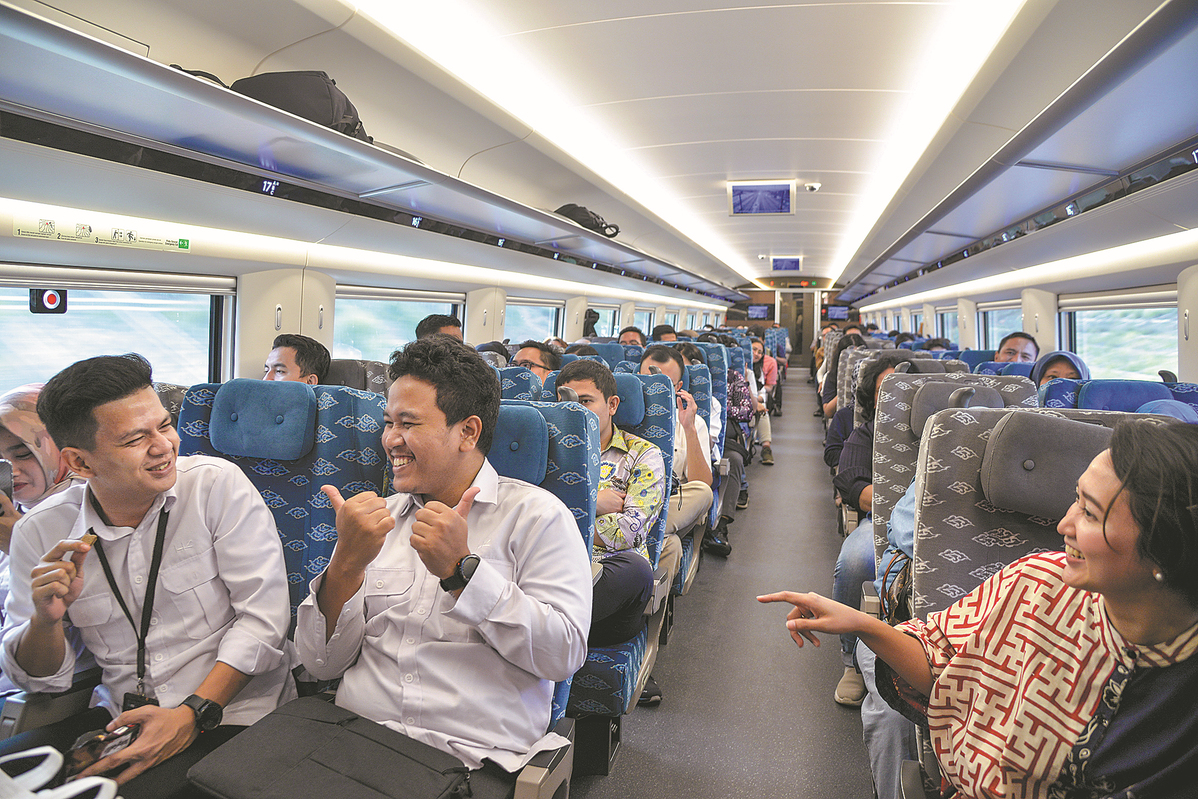China helps Indonesia hit the fast track


Standout feature
The Jakarta-Bandung HSR project is the first overseas venture to rely wholly on Chinese railway systems, technology and components.
Ju Guojiang, chairman of China Railway International Co, said: "The project's main feature is undoubtedly its speed. It is the first high-speed railway built outside of China to have a top speed of 350 kilometers per hour."
The China-Laos Railway was designed with a maximum speed of 160 km/h, while the Hungary-Serbia Railway, which is still under construction, has a projected top speed of 200 km/h.
The Jakarta-Bandung HSR is the result of joint efforts by participants from China and Indonesia. The two nations signed an agreement in October 2015 to establish a joint venture to build and operate the project, for which construction began in 2018.
Dwiyana Slamet Riyadi, president-director of PT Kereta Cepat Indonesia China, or KCIC, said, "We worked together on construction, operation and maintenance."
KCIC is a joint venture between PT Pilar Sinergi BUMN, a consortium of Indonesian government-owned companies, and Beijing Yawan Co, a syndicate of Chinese railway companies.
Riyadi said most of the construction workers for the project were Indonesian, with 15,000 people employed. There were seven Indonesian workers for every Chinese employee.
The Jakarta-Bandung high-speed line boasts 13 tunnels and 56 bridges. The trains, which have been adapted for Indonesia's tropical climate, are equipped with a safety system that responds to earthquakes, floods and other emergency situations.
Lu Kang, China's ambassador to Indonesia, said, "This high-speed railway project is a very fine example of the mutual trust and mutual assistance among friendly countries.
"From inception to completion, and despite the challenges faced during the construction period, teams from both countries cooperated closely, supporting each other through difficulties and challenges."
In the coming years, Indonesia is expected to become fully equipped to operate the new high-speed line independently.
Riyadi said: "We foresee a smooth transfer of technology and knowledge. We expect this process to take one to two years."


















